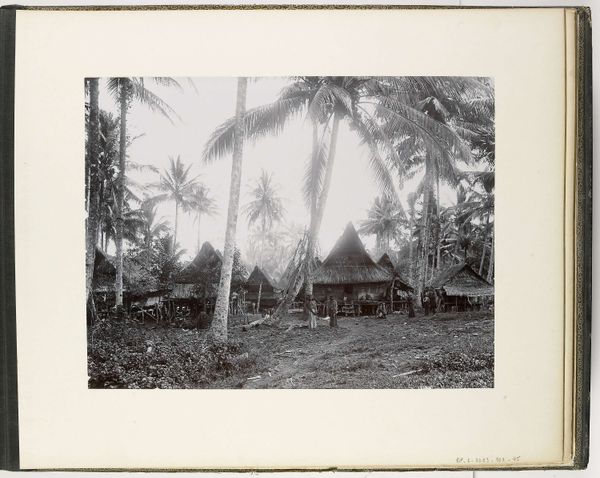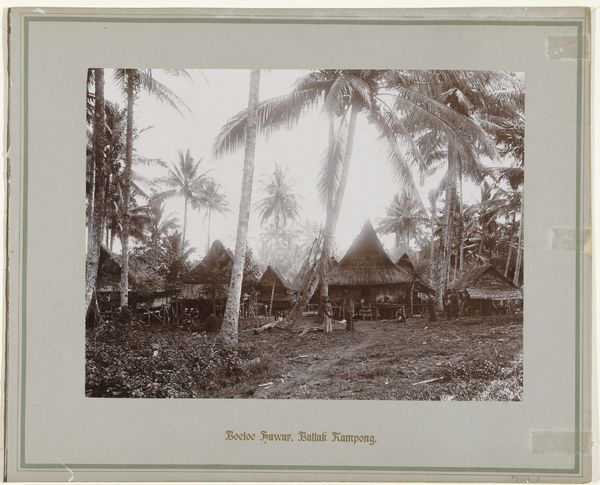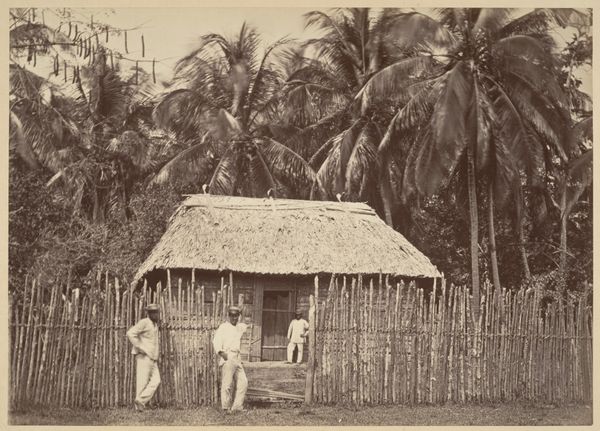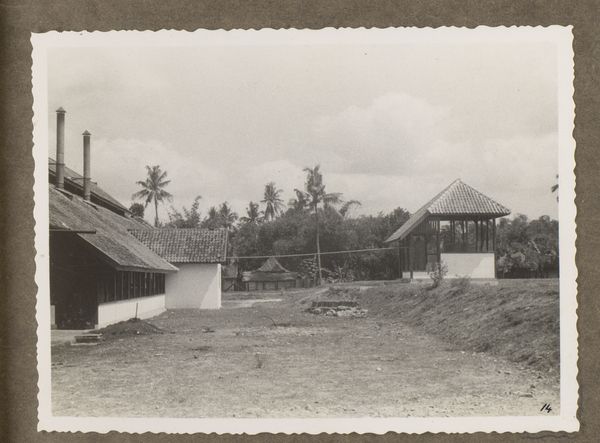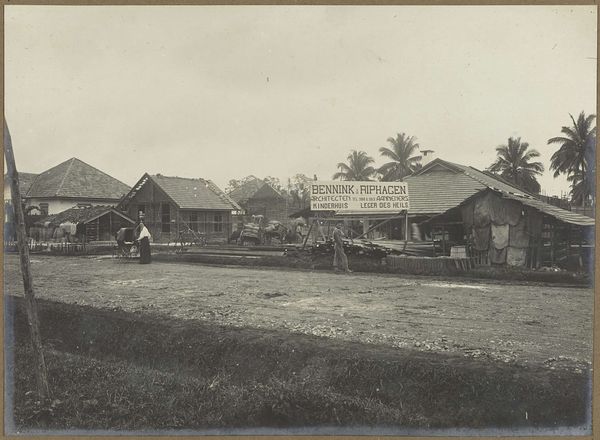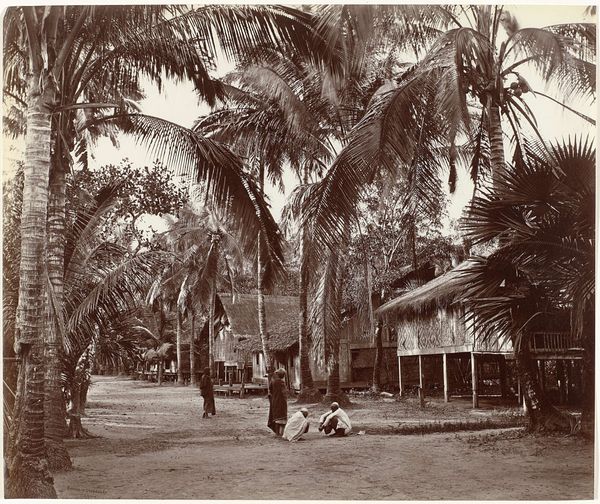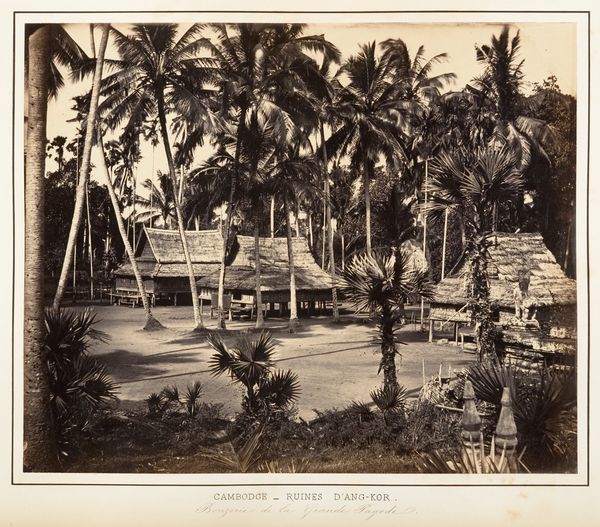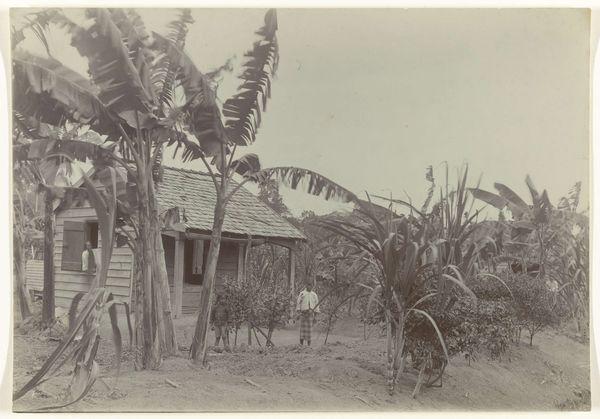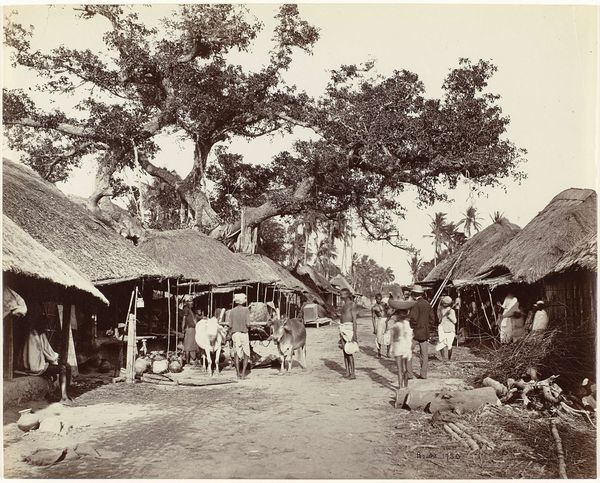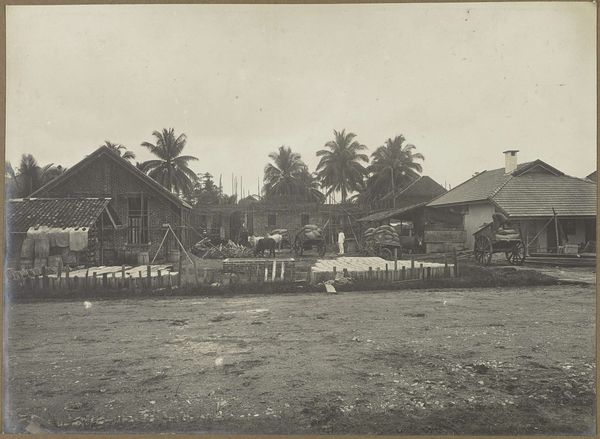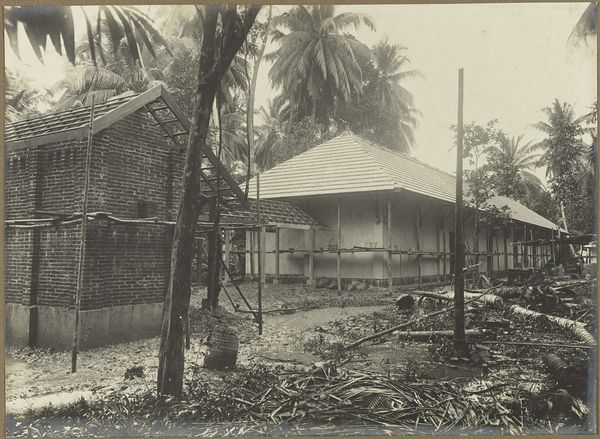
photography, gelatin-silver-print
#
landscape
#
photography
#
orientalism
#
gelatin-silver-print
Dimensions: height 262 mm, width 322 mm
Copyright: Rijks Museum: Open Domain
Editor: Here we have "Gezicht op een Batakdorp, Sumatra," a gelatin silver print made sometime between 1889 and 1898, attributed to Stafhell & Kleingrothe. The details in the village scene are fascinating, but there's almost an anthropological detachment to the composition. How do you interpret this work in its historical context? Curator: It's crucial to recognize the perspective from which this photograph was taken. Colonial-era photography like this often served as a tool for documenting and, in some ways, controlling narratives about colonized lands and people. This image presents what was considered "exotic" or "other" for a Western audience. How do you think that impacts our viewing of the piece today? Editor: It definitely casts a shadow. The focus is on the visual novelty of the Batak village, potentially at the expense of a deeper understanding of the culture itself. It feels like a study, rather than an invitation to connect. Curator: Precisely. This "Orientalist" lens framed the perception of Southeast Asia for many Europeans. What role did images like this play in shaping policy and public perception back home, do you think? Was it for education, or was there perhaps a different intent? Editor: I imagine it both fueled and justified colonial ambitions. It's hard to separate the "documentary" value from its use as propaganda. Curator: It's a balancing act we grapple with constantly in art history. We acknowledge the aesthetic value or historical information a piece holds while critically assessing the power structures it represents. Do you feel this understanding changes your initial reaction to the photograph? Editor: Absolutely. Knowing the social implications forces me to question what's presented and, more importantly, what's missing. I think it asks us to consider whose stories were being told, and whose were silenced in the making of such art. Curator: Exactly, and continuing this discussion helps to ensure these silences are recognised.
Comments
No comments
Be the first to comment and join the conversation on the ultimate creative platform.
